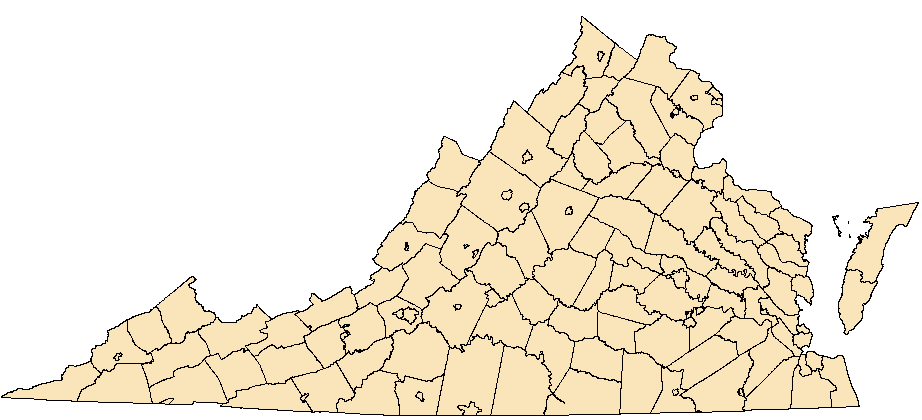Erynnis lucilius (Scudder and Burgess, 1870)
Columbine Duskywing
NatureServe Global Rank: G4
Virginia State Rank: S1S3
VA DGIF Tier: None
Federal Legal Status: None
Virginia Legal Status: None
Description: The Columbine Duskywing is small and quite difficult to correctly identify. The main dorsal coloration is dark brown with some lighter brown and gray markings, more prominent toward the outer margins of both wings. Males exhibit a silver/gray area and females a lighter brown area on the leading edge of the front wing, just inside the wrist bracelet markings.
Similar species: The Columbine Duskywing may be impossible to separate from two other Duskywing species in the field, the Persius Duskywing (E. persius) and Wild Indigo (E. baptisiae) Duskywing. There is even overlap in host plant choices. This is the smallest species of the three. The Persius Duskywing has a wrist bracelet that is more perpendicular than that of the Columbine Duskywing and is even more rarely found in the area. But these characters may be more suggestive than indicative. Between the three, characteristics of genitalia may be the only true differentiation. These species may be separated from other Duskywing species more easily. The Mottled Duskywing (E. martialis) has more contrasting marking on both front and hind wings, and both Horace?s (E. horatius) and Juvenal?s (E. juvenalis) Duskywings can be separated by their larger size and lighter base colors. Slightly more similar, the Zarucco Duskywing (E. zarucco) does have darker coloration, especially at the base of the wings, but it has more brown coloration on the outer margins of the front wings while Columbine Duskywings have gray shading in these areas. The row of dark maculations surrounding the dots on the front wing is more continuous in Columbine Duskywings while it is disjunctive and sometimes incomplete in the Zarucco Duskywing.
North American Range: Columbine Duskywings have an uncertain distribution range based on past taxonomic uncertainties. They have been found in New York, New Jersey, Connecticut, Pennsylvania, West Virginia, and Southwest Virginia in localized populations.
VA Observations by Locality: Bedford | Highland | Page | Roanoke | Smyth | Bath | Roanoke, City of








Flight season and broods: This species typically has two broods lasting from Mid-April through September.
Habitat and Food Plants: This species prefers habitats with easy accessibility to their host plants. They are commonly found in alvars, limestone outcrops, shale slopes, cliffs, and rocky areas. Its choice host plants are Wild Columbine (Aquilegia Canadensis) and Garden Columbine (Aquilegia vulgaris). But similar plants, including those used by similar Duskywing species, cannot be ruled out.
Behavior and Ecology: It flies in the typical low bouncy flight of Erynnins, but can be very fast flying and hard to approach. It is habitat dependent and can only complete its lifecycle if its host plant is present. Males perch on the ground or rocks, often visiting pink, white or yellow flowers. Larvae live in enclosures made by folding the host leave with silk. Mature larvae have been known to overwinter in leaf litter.
Population trend and potential threats: Population is dependent on suitable habitat. Habitat must be maintained in order to have stable populations. On a global scale the population is secure, though they can be rare in parts of their range.
Management practices: None have been enforced for this species.
References: Allen, T. J. 1997. The Butterflies of West Virginia and their Caterpillars. University of Pittsburg Press. 388pp.
Cech, R. and G. Tudor. 2005. Butterflies of the East Coast. Pg. 248. Princeton University Press.
Pelham, J. P. 2008. A catalogue of butterflies of the United States and Canada with complete bibliography of descriptive and systematic literature. Journal of Research on the Lepidoptera. Vol. 40. Pg. 660.
Virginia Department of Conservation and Recreation, Natural Heritage Program, 600 E. Main St., 24th Floor, Richmond, VA 23219
This atlas was compiled
by the VA Natural Heritage Program with funds provided by the VA Dept. of Game and Inland Fisheries through a state wildlife grant
from U.S. Fish and Wildlife Service
Questions/Comments? Check the contacts page |
Internet Privacy Policy Statement
Last Modified: Friday, 26 February 2021, 03:21:56 PM